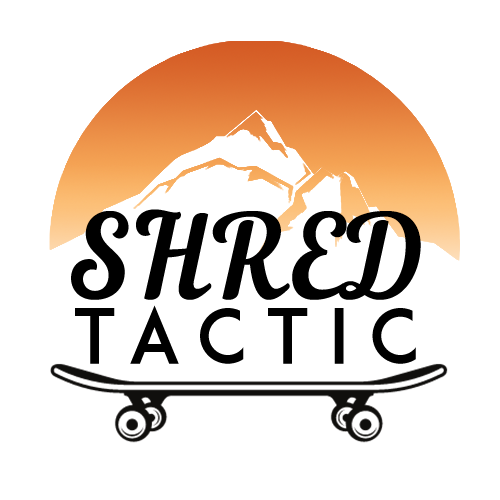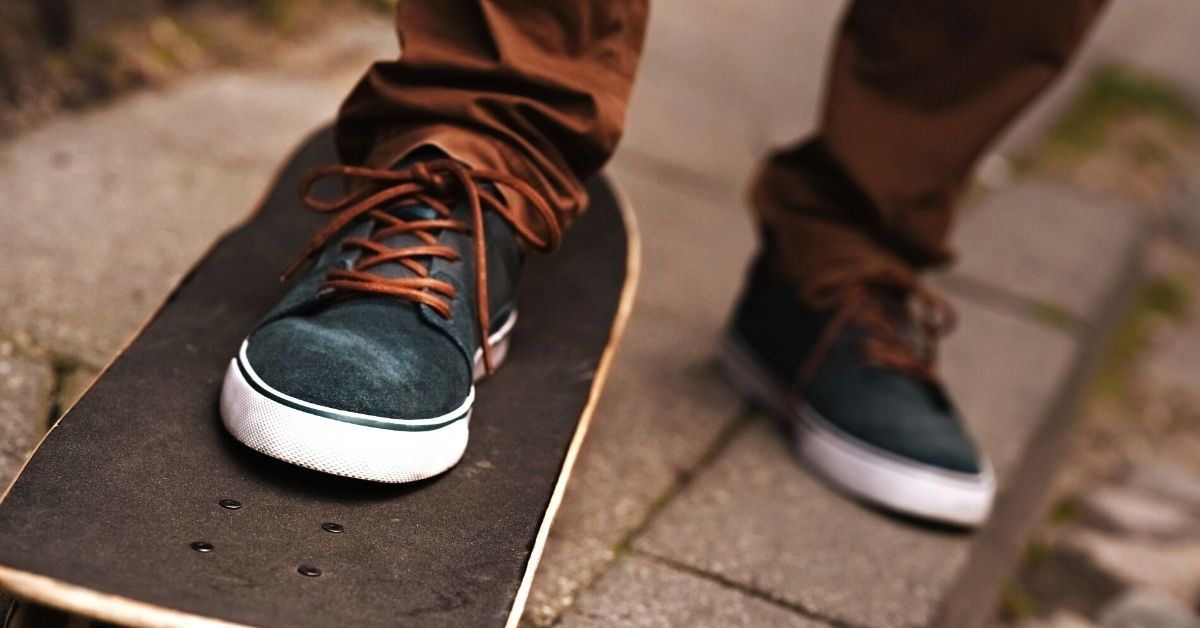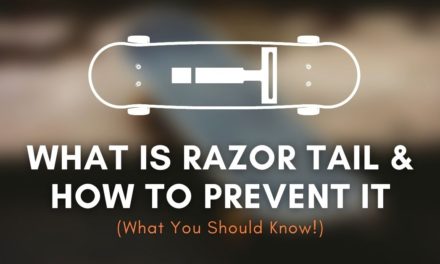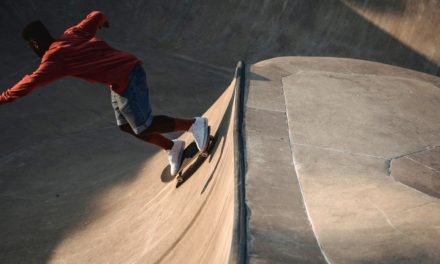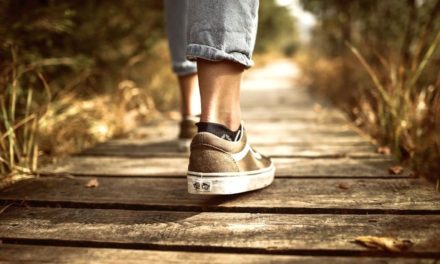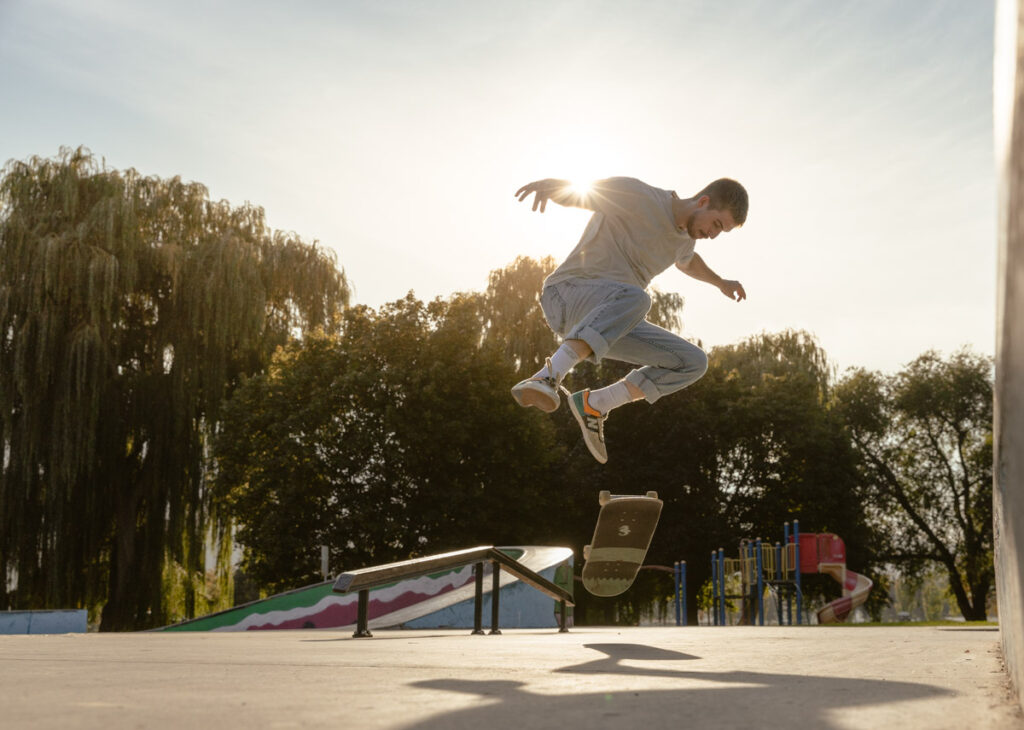Before you can start to think about the first skateboard tricks you’re going to try, getting your stance and foot placement figured out is kind of important. I mean, without the proper foot placement, you’re going to have an even harder time learning.
With skateboarding, the first thing you need to figure out is your stance. Everyone has different preferences in which direction they stand on a board, known as goofy or regular stances. Figuring this out is a crucial place to start before you start trying to ride.
Once your stance is figured out, it’s a matter of knowing how you should place your feet on your board for pushing, riding, and other basic skills. All of which have a bit of a different foot placement to help keep you balanced.
So all that sounds pretty straightforward on paper, but once it comes time to step on your board, you probably feel a little lost. That’s why I’m going to break down everything you need to know about finding your stance and basic skateboard foot placements you’ll want to remember. With a bit of practice, these techniques will help your progression by building a solid foundation in your skating.
Let’s get started!
How To Stand On A Skateboard (Goofy Or Regular)
Besides how your feet are placed on your board, the first thing to consider is whether you ride with your left foot forward or your right.
These two stances are known as “goofy” and “regular” stances. Goofy means you skate with your right foot forward, while regular means you skate with your left foot forward.
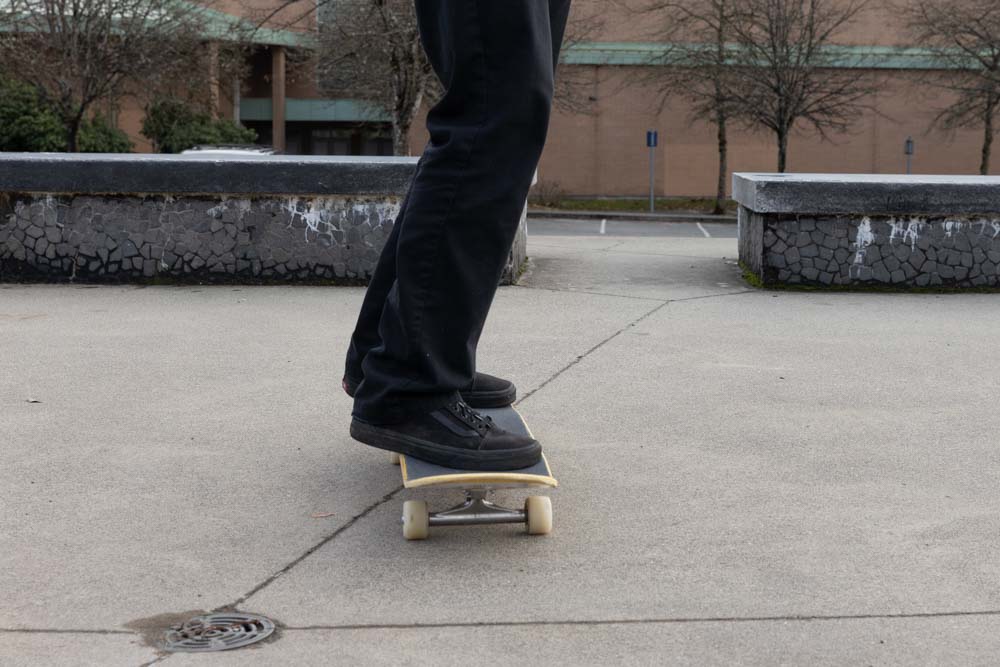
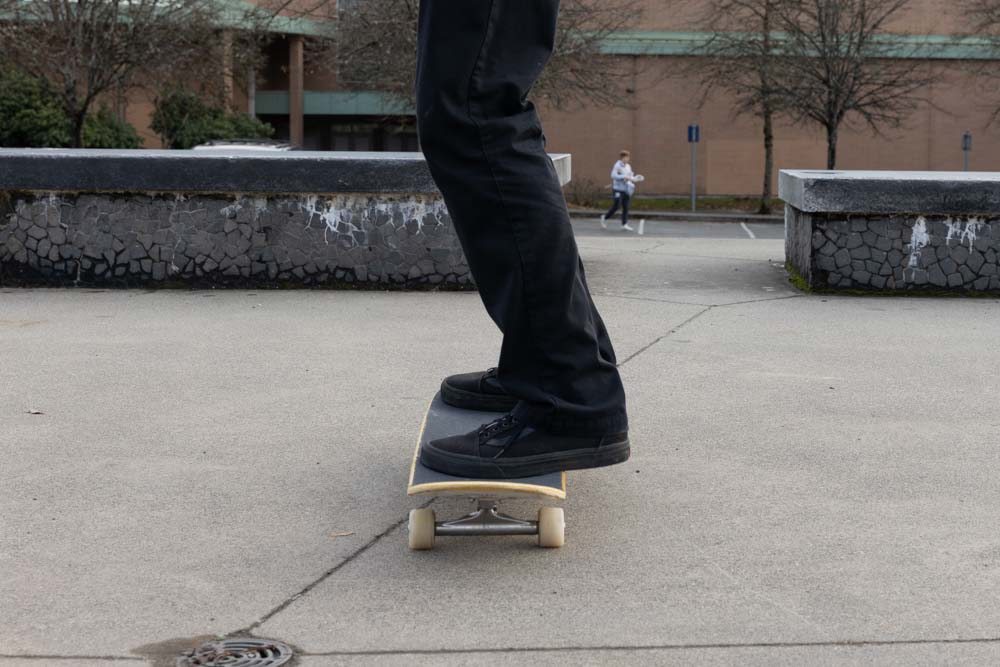
This all comes down to personal preference, so don’t feel like one is better than the other. It’s the same idea that some people prefer to kick a ball with their right foot instead of their left.
Now, if you have experience with snowboarding or surfing, try to think back to how you stand on those. For example, do you ride with your left foot forward or your right? On a skateboard, it will likely be the same. I guess that’s the beauty of boardsports; once you know your stance with one, it transfers over to all the rest!
But if you don’t have any previous experience with finding your stance, there are other ways to figure it out too! The easiest method is with the falling forward test.
Standing with your feet together, begin to lean forward until you are about to fall. Naturally, one of your legs will come out in front of you to prevent you from falling, and the one that does is likely your dominant foot.
For example, I skate with a goofy stance, meaning my right foot is forward. When I try the fall test, my right foot is the one that I instinctually use to catch myself.
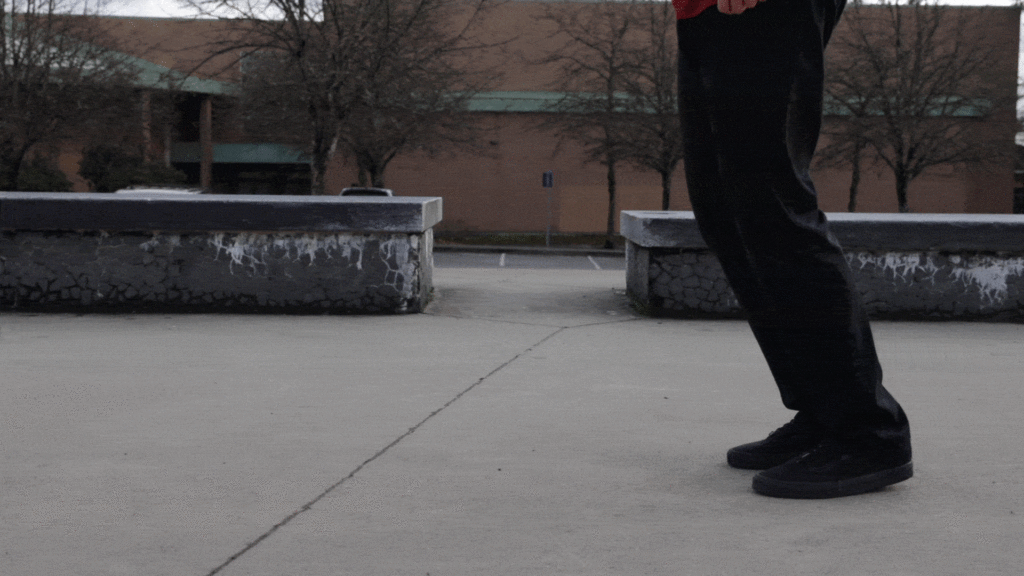
With this method, the one flaw is that overthinking can skew the results. So to help solve this problem, repeat the process, except this time, don’t fall forward by yourself. Instead, get a friend to gently push you from behind without telling you when they will do it. This added layer of surprise typically gives a more candid reaction to which foot you use to catch yourself.
Now that you know which foot is your dominant foot, that will be your “front” foot from here on out! Once again, goofy means your right foot is on the front of the board, while regular means your left foot is on the front.
How To Balance On A Skateboard
If you’re starting out with skateboarding, you know how sketchy it feels to first stand on your board. Suddenly the object you’re standing on wants to move underneath you and feels like it’s trying to sabotage your balance. Luckily balancing on a skateboard can be made easy with a few simple steps.
Before you start, I would recommend finding a smooth flat piece of concrete to start on. Although you may feel more comfortable on grass where your board won’t move, this ultimately serves as a hindrance. Since the board will always be moving under your feet, you might as well get used to the feeling from the start.
Step 1: Place Your Front Foot Over The Front Trucks
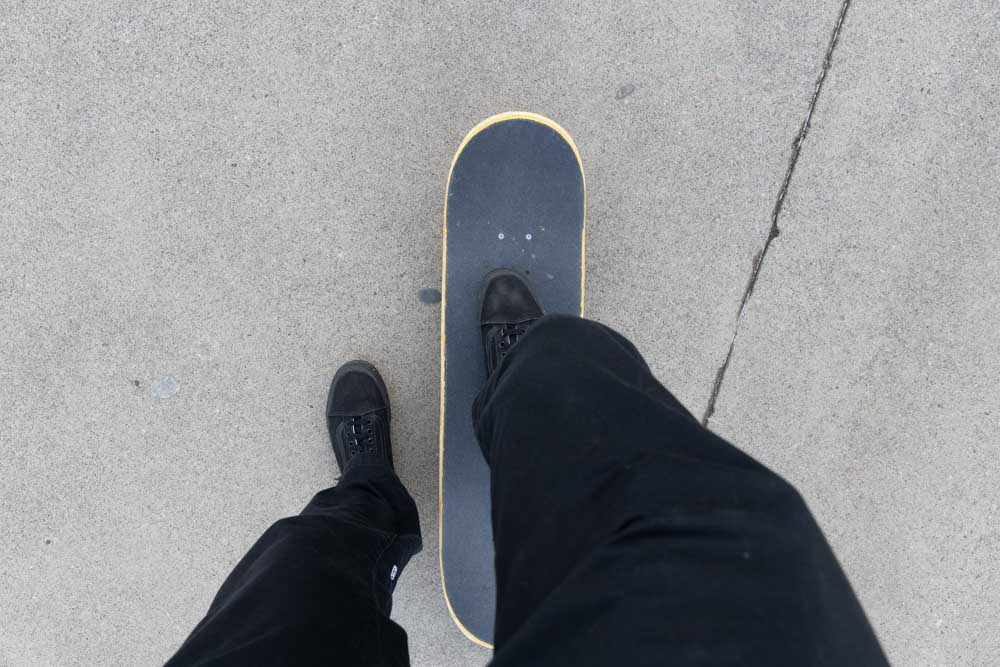
Standing beside your skateboard (remembering your new stance using the tips in the last section), place your front foot over the trucks of your skateboard. The trucks are easy to spot since they are directly underneath each set of bolts on your deck. That means you have to place your foot directly over the front bolts.
Putting your weight over the trucks is often the most secure since you can’t lift the tail or nose, and you will feel more “connected” to the board.
Step 2: Carefully Weight & Unweight Your Front Leg
Before you get both feet on the skateboard, weight and unweight your front foot to lift your back foot off the ground, this will give you a taste of what it’s like having your weight over the board without fully committing to it.
Do this a few times, weighting and unweighting the front foot, lifting and lowering the back foot, until you feel confident with this.
Step 3: Place Your Back Foot Over The Back Trucks
Next, weight your front foot again to lift up your back leg. This time place your back foot over the rear trucks. Once again, the trucks are located directly under the bolts. That means you just need to place your back foot over the back bolts! Try to do this in one fluid movement.
Step 4: Weight Both Your Feet Equally
With both of your feet now positioned over your trucks, consciously weight both your feet equally on your board. It’s not uncommon for people to favor one foot or the other, but this makes you more prone to slipping out. You will feel much more secure on the board with equally weighted feet.
Step 5: Bend Your Knees
Now make sure both your knees have a slight bend in them. Bent knees help to dampen any movements of your skateboard and allow your body to adjust with the skateboard’s movement. With straight legs, that rigidity will make your board feel a lot more wobbly and harder to balance on.
Step 6: Look In The Direction You Want To Go
Many people, when learning to skate (myself included when I was learning), love to look at their feet. Even though this might feel the most natural, it can actually make it more challenging to balance and maneuver. So instead, lift your head and look in the direction you would want to go. At this point, you (hopefully) aren’t moving, so this is just to build that habit down the road.
After all, you’re going to need to look where you’re going once you learn how to push!
Step 7: Lean Side To Side To Move The Trucks

With your balance set, you should start to feel a bit more confident on the skateboard. That means it’s time to lean side to side on your skateboard to angle the deck. Since your trucks pivot under your weight to help turn your board, this is a feeling you need to get used to. That side-to-side movement won’t go away, so trying to move your board will help get you a feel for the balance right away.
After following these steps, you will probably need to practice it a few times until it feels somewhat comfortable. Once you feel confident with how you stand on a skateboard, it’s time to learn how to push. Since there’s a lot of cover on that topic, I wrote another article on how to push a skateboard as a complete beginner. I definitely recommend checking that out after you feel balanced on your board!
How To Place Your Feet On A Skateboard
In the previous section, you learned how to balance on your board with both feet over your trucks. Although that’s a great way to start standing on your skateboard, it’s not the way you will stand on it most of the time. For most tricks in skateboarding, you need to be able to lift the front of your board. This is only possible when your back foot is over the tail since you don’t get enough leverage when your back foot is over your trucks.
So with that in mind, let’s go through a few standard foot positions for basic skills like riding, pushing, turning, and stopping your skateboard.
– Standard Foot Placement For Riding
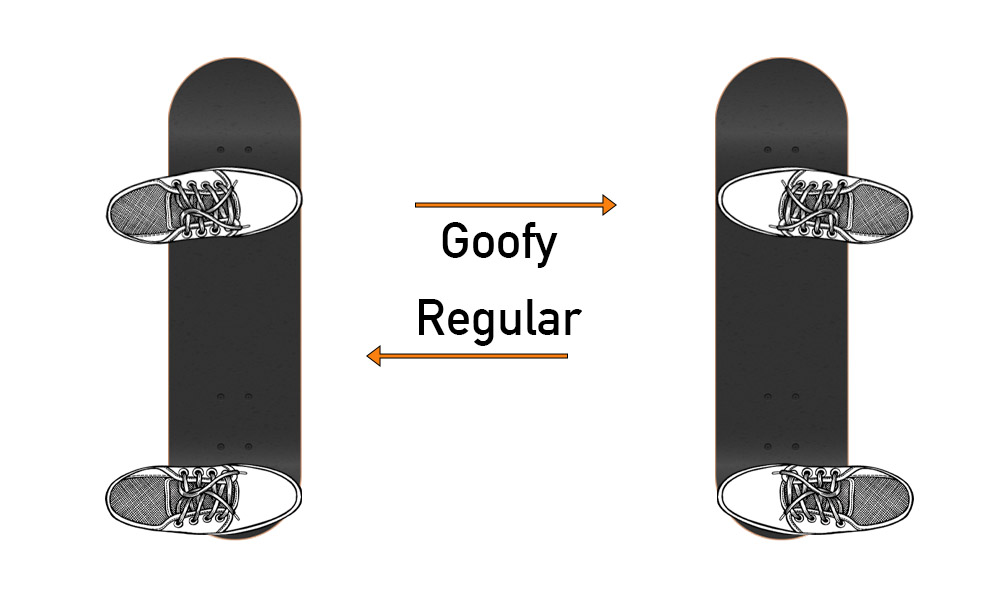
Once you feel confident balancing on your board with your feet over the bolts, it’s time to shift your back foot slightly so that it’s over the tail. The tail is the back part of your board that angles up. Compared to the nose, it’s often thinner in width and has a less steep upward angle. By placing your foot here it’s much easier to control your board as well as lift up the font for manuals or popping tricks.
With your back foot placed over the tail, angle both your feet so they are horizontal across your skateboard. I’ve seen a lot of beginners start skating with their front foot pointed forward, but this is a habit you want to break. That’s because you can only do tricks with your feet horizontal, so progression will be slower if you don’t feel comfortable with your feet that way.
Having both your feet horizontal and about shoulder width apart is the ideal foot placement while crusing around on your board.
– Foot Placement For Pushing
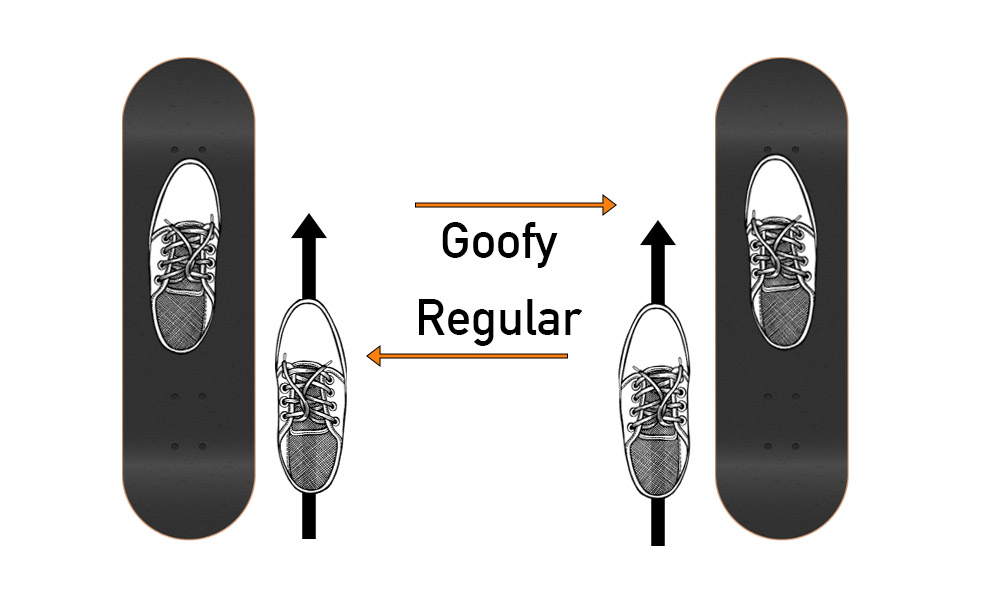
When it comes to pushing, only your front foot will stay on the board while your back foot pushes off the ground. For this foot placement, you need to first rotate your front foot so it’s pointed forward on your skateboard. Now take your back foot off the board and place it on the ground to push.
Once you have done a few pushes and are up to speed, rewind the process. Place your back foot back onto the tail while rotating your front foot to sit horizontally on your board again.
– Foot Placement For Turning A Skateboard
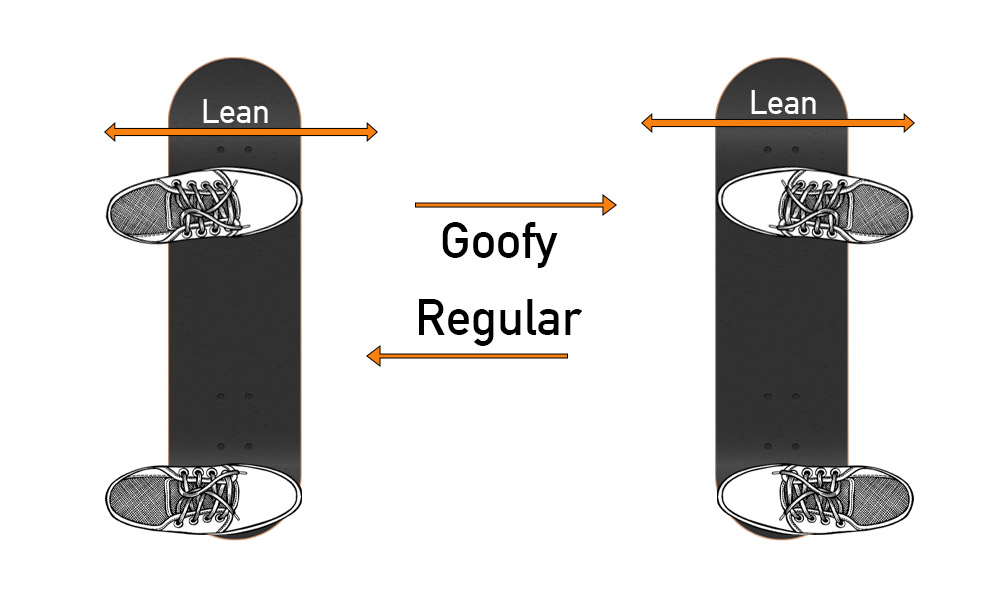
Although there are a few different ways to turn a skateboard, let’s talk about the most basic version of leaning side to side. For the most part, your feet will be in the same position as they are for standard riding. The only difference if you need to really make sure your knees are bent and your feet are shoulder width apart. That way when you start to lean side to side to turn your board, you will be better balanced and not fall off.
– Foot Placement For Stopping Your Skateboard
Lastly, to stop your skateboard it’s easiest to drag your back foot (aka pushing foot) along the ground to slow your momentum. Similar to the foot placement for pushing, rotate your front foot so it’s facing forward on your skateboard. Next take off your back foot and place it flat on the ground.
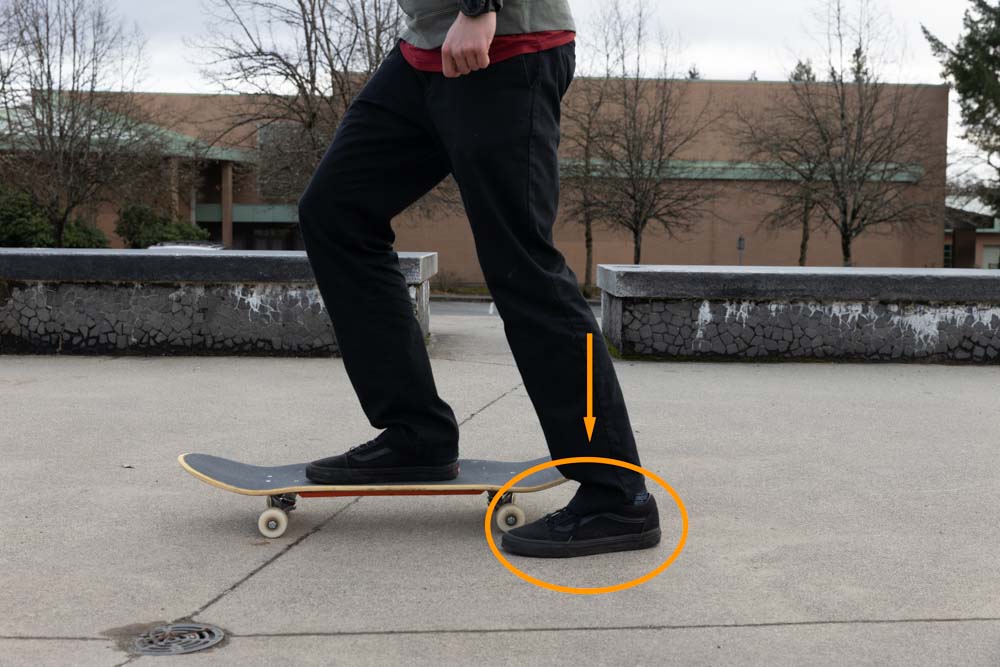
Slowly weight the foot that’s on the ground until you start to feel resistance between your shoe and the ground. The more weight you put into it, the faster you’ll end up slowing down! I explain this process more in-depth along with several other stopping techniques in this guide to stopping your skateboard.
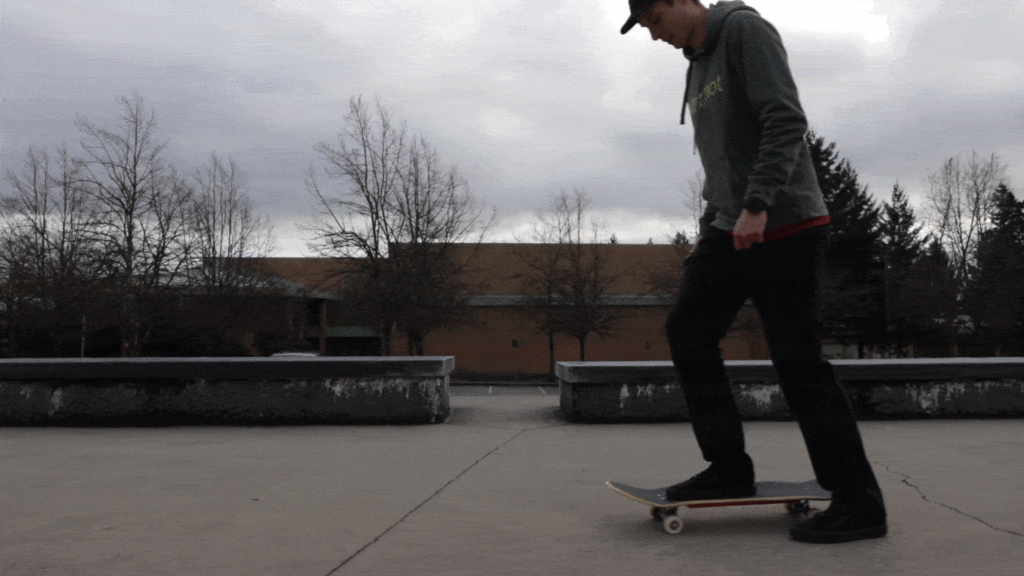
So now you know what stance you are for skateboarding, along with foot placement and techniques to help balance, turn, and stop on your board. With these essential skills you have the building blocks of learning how to skateboard. Although it will take some practice until all of this feels like second nature, stick with it and you’re guaranteed to see results in your progression!
Happy Shredding!
– Brendan 🙂
